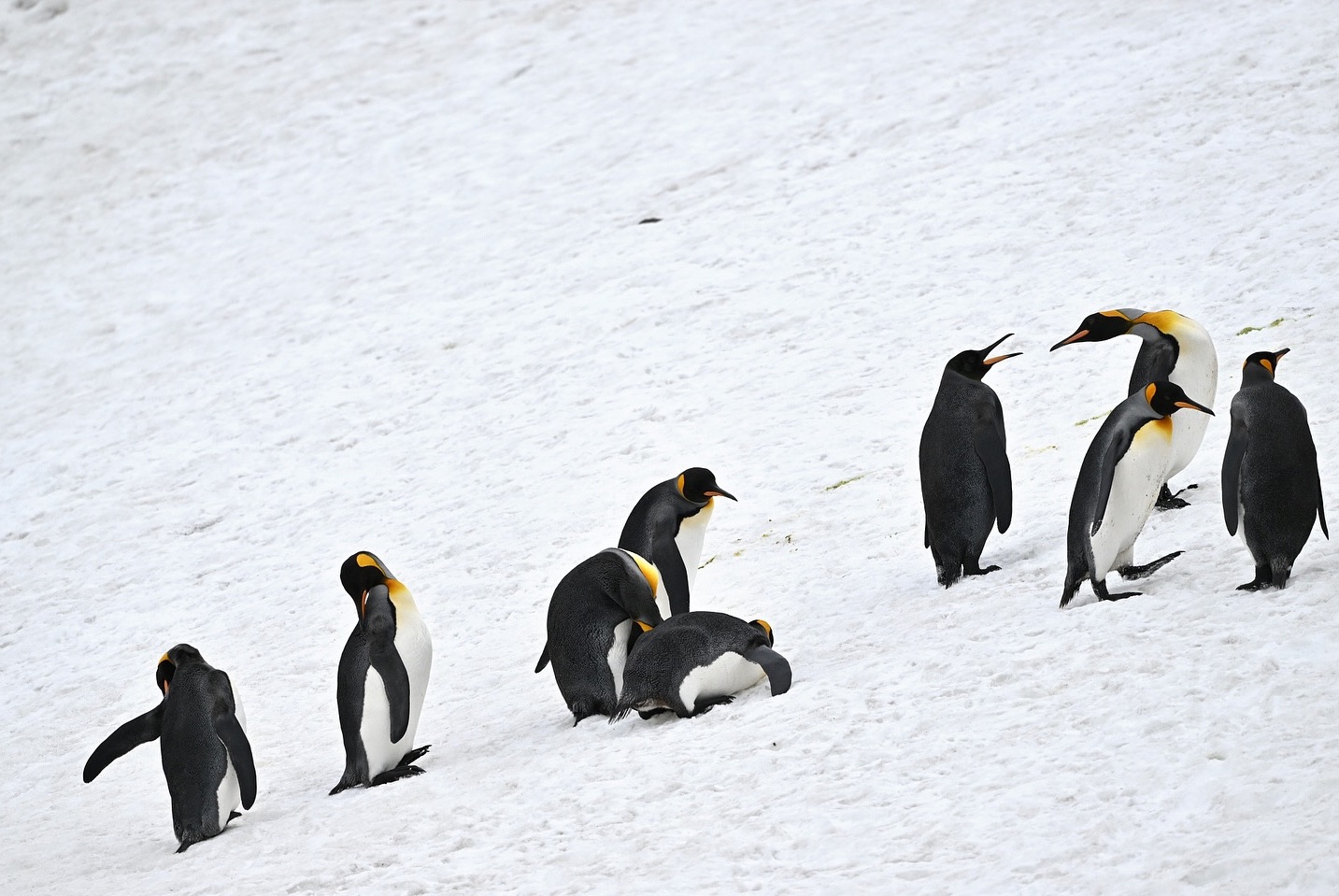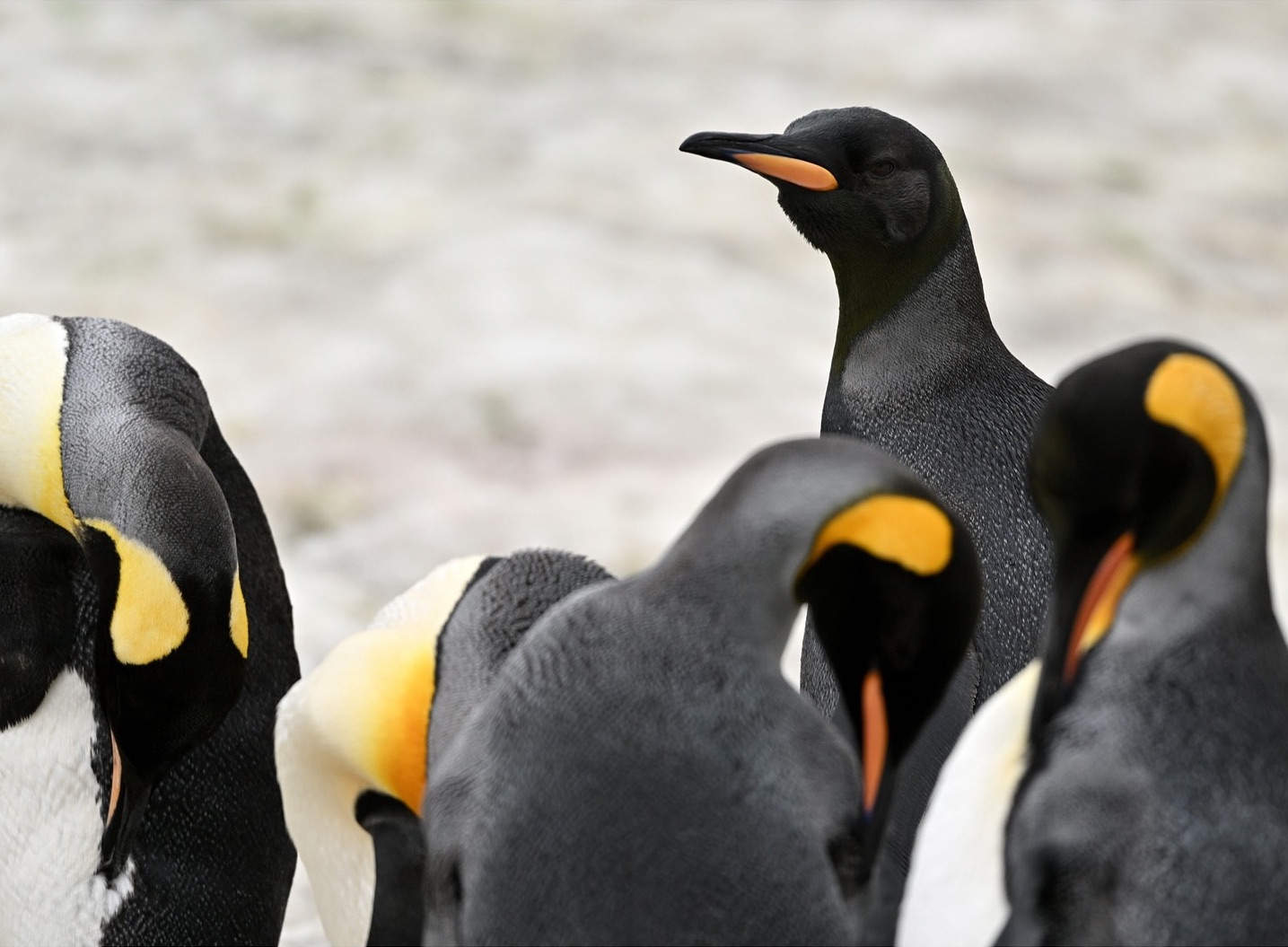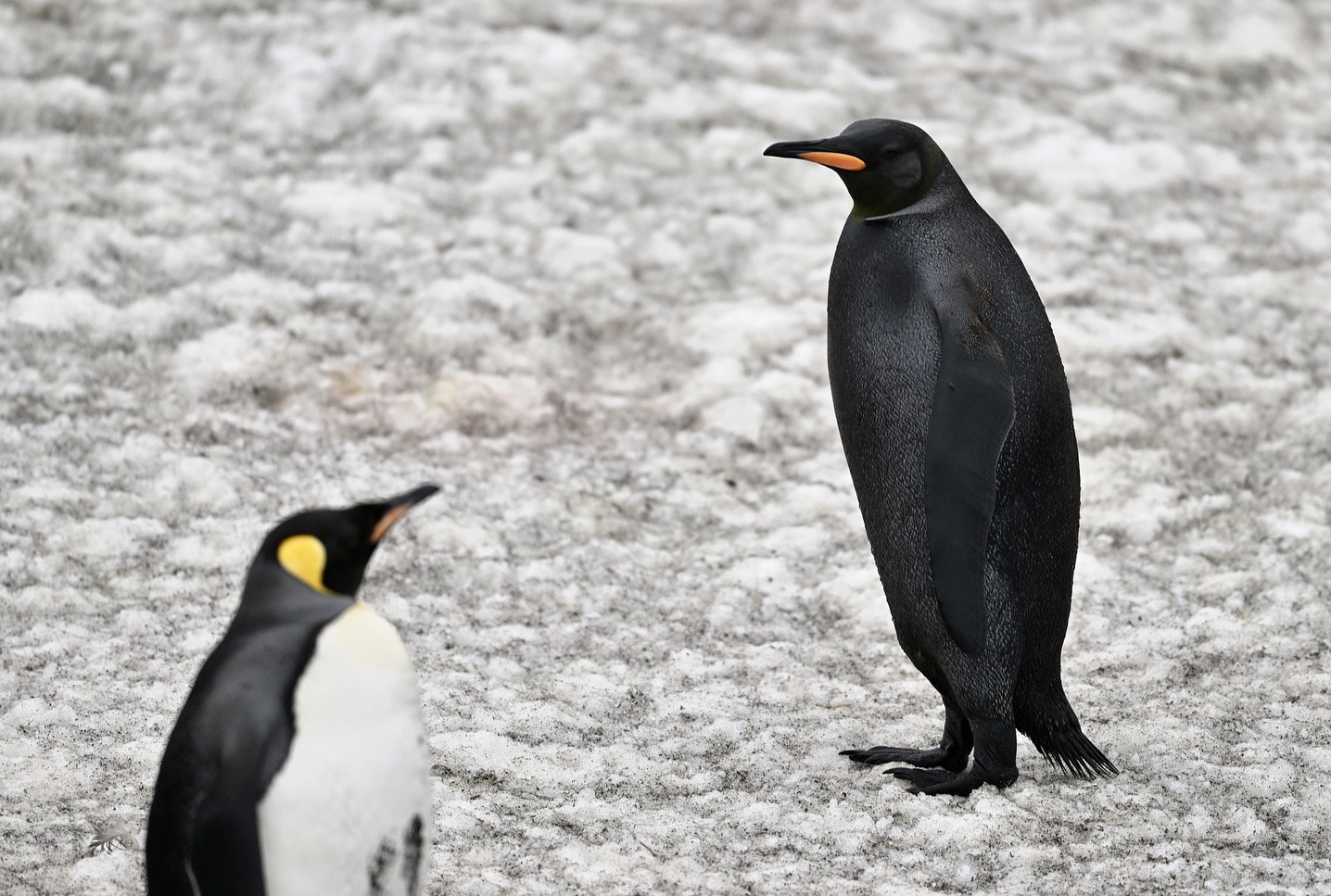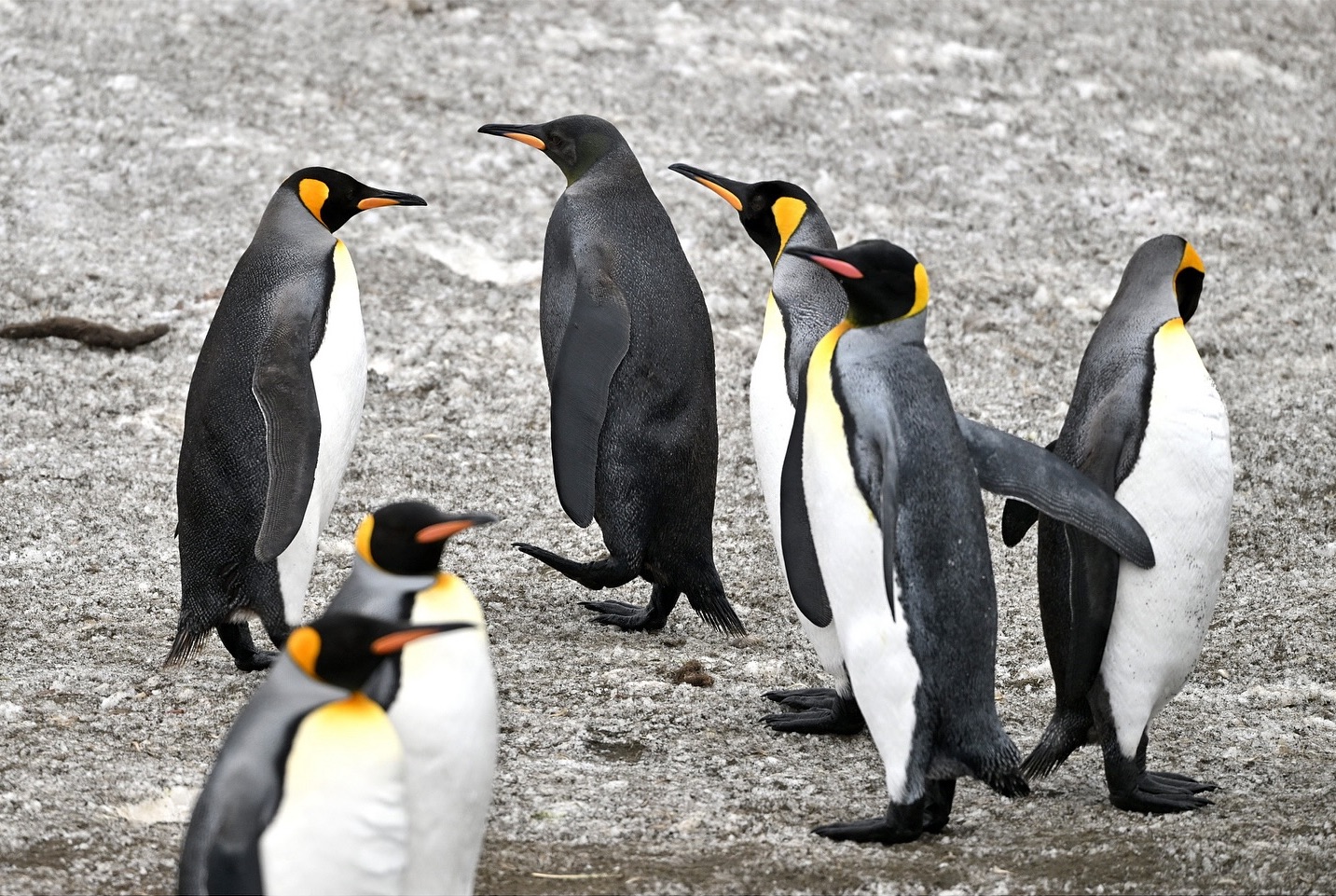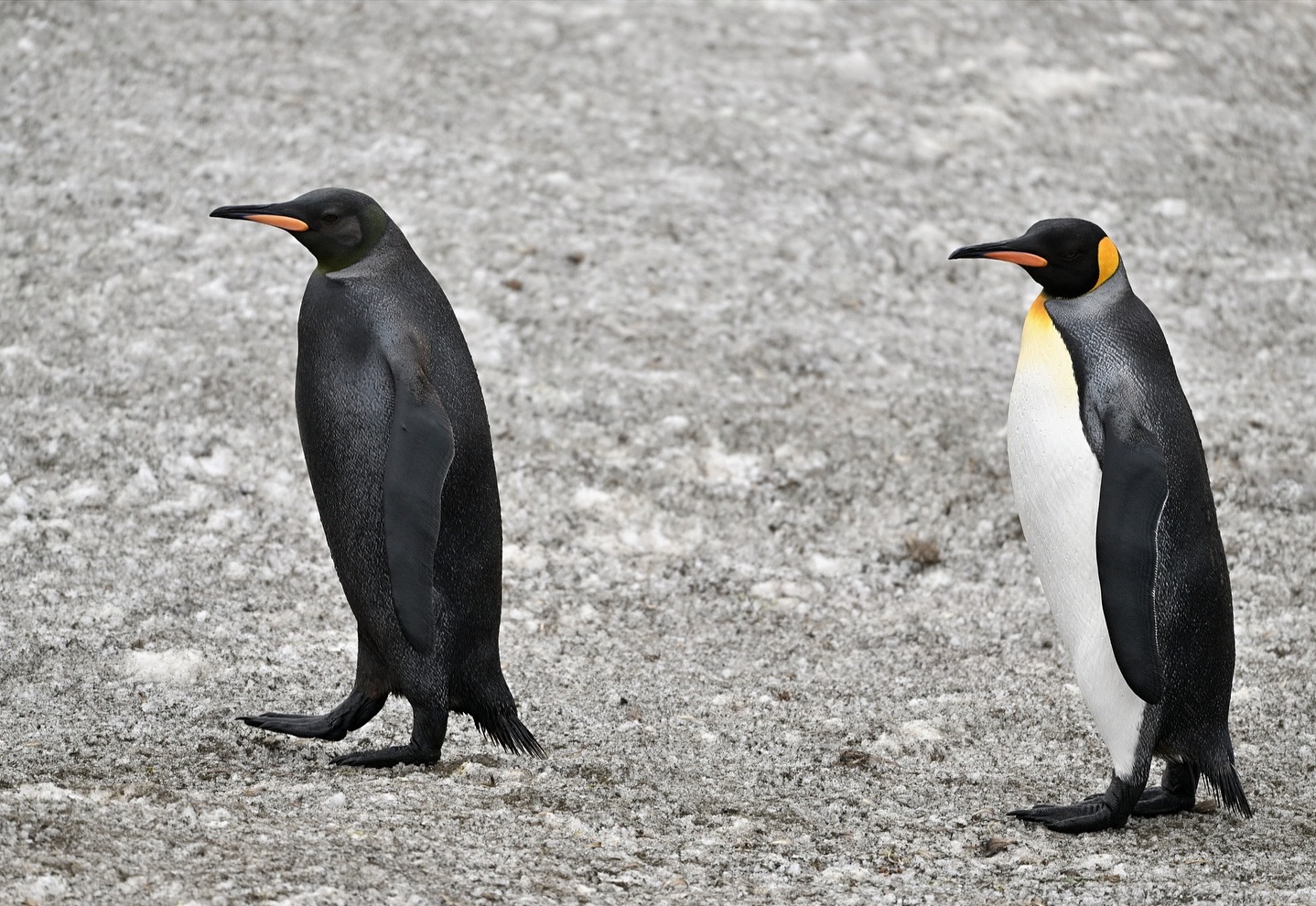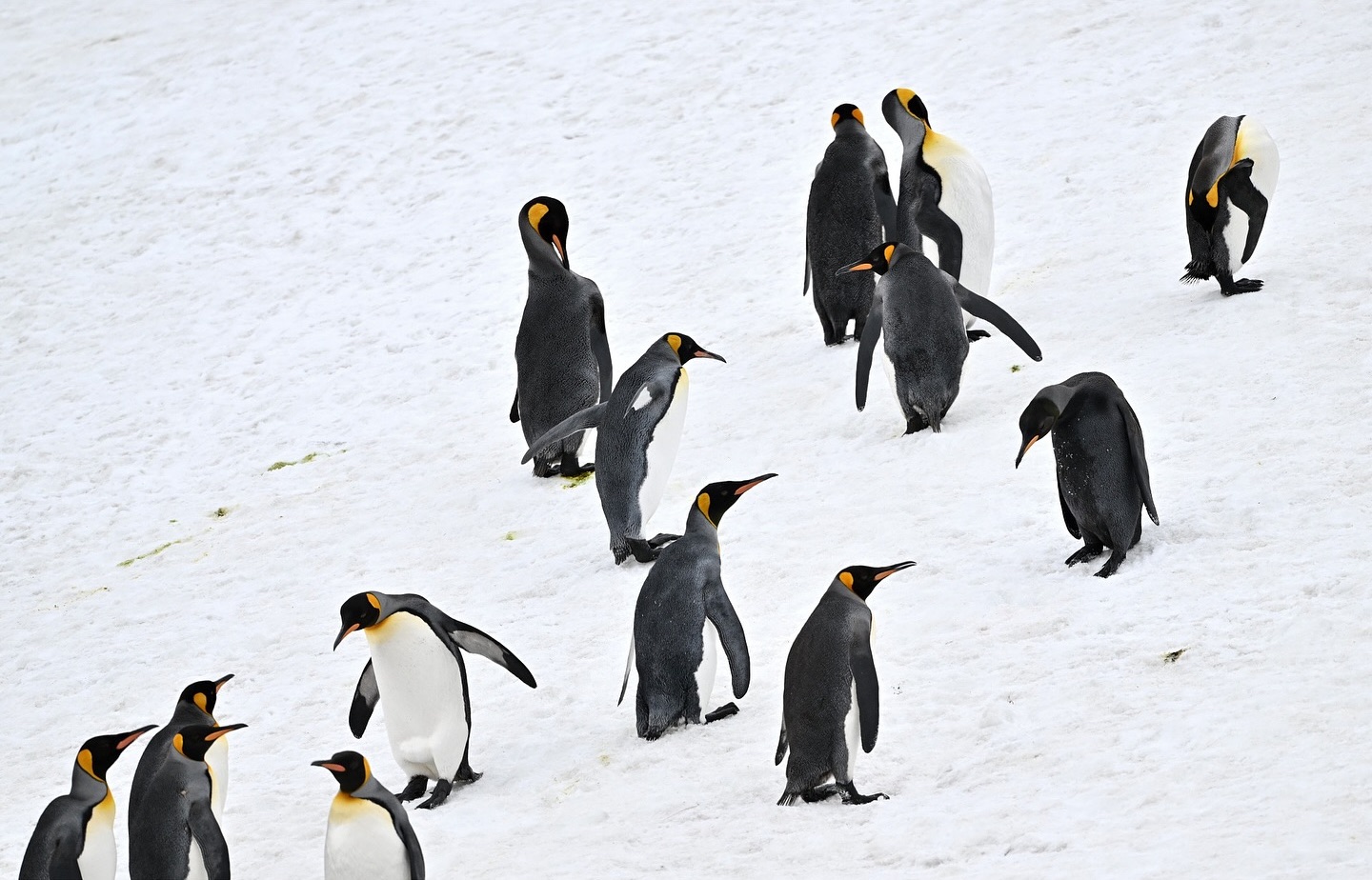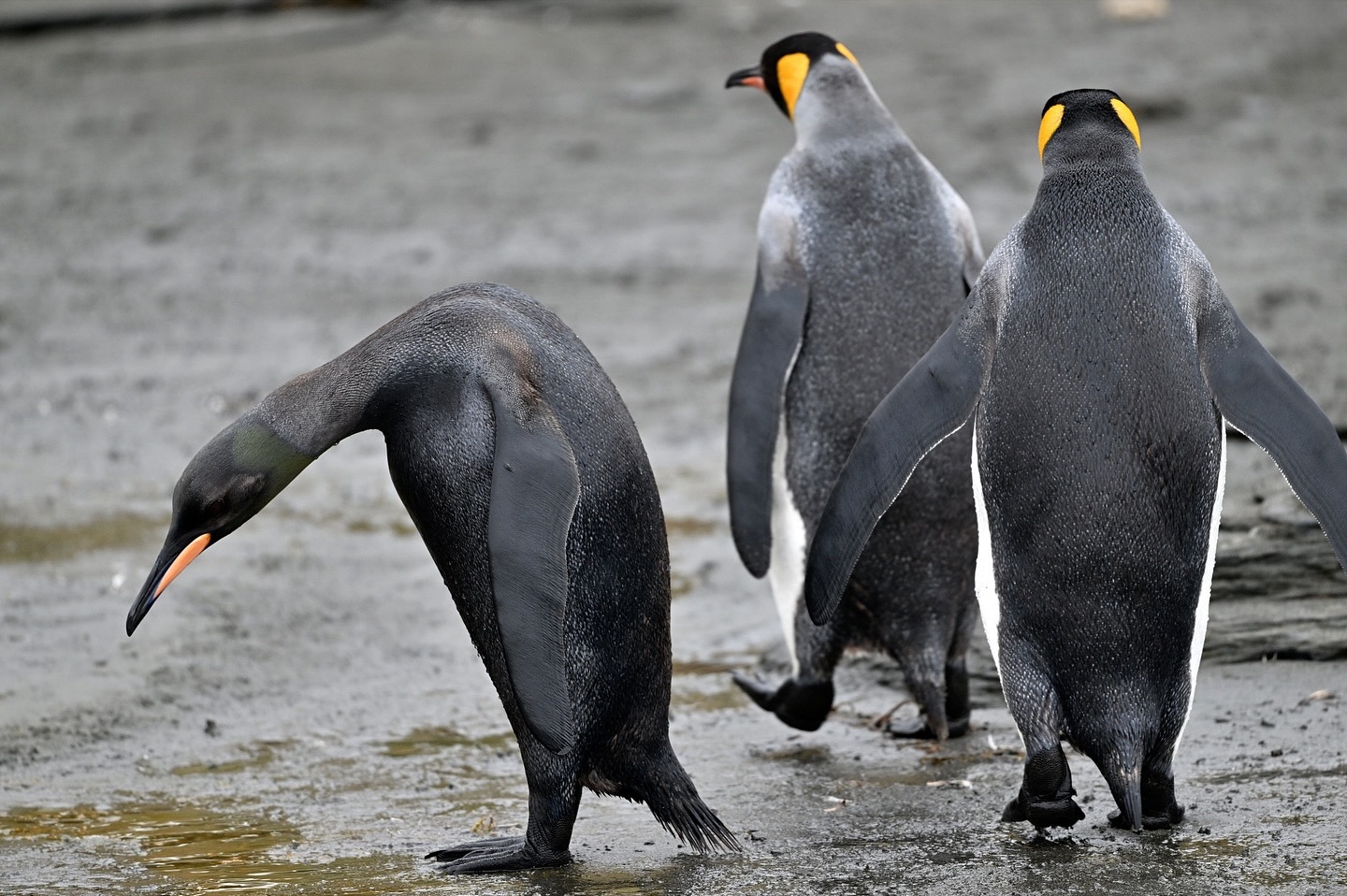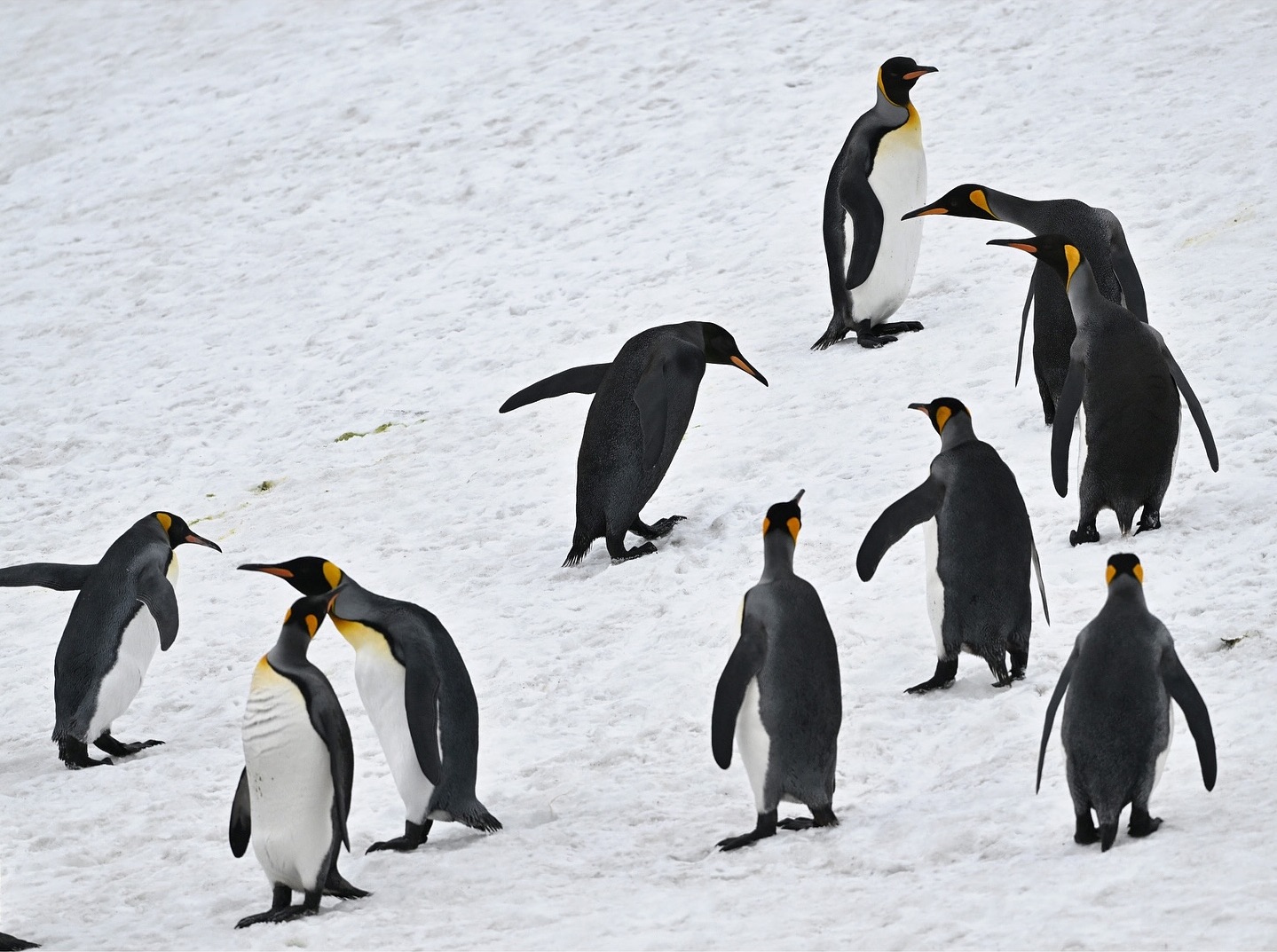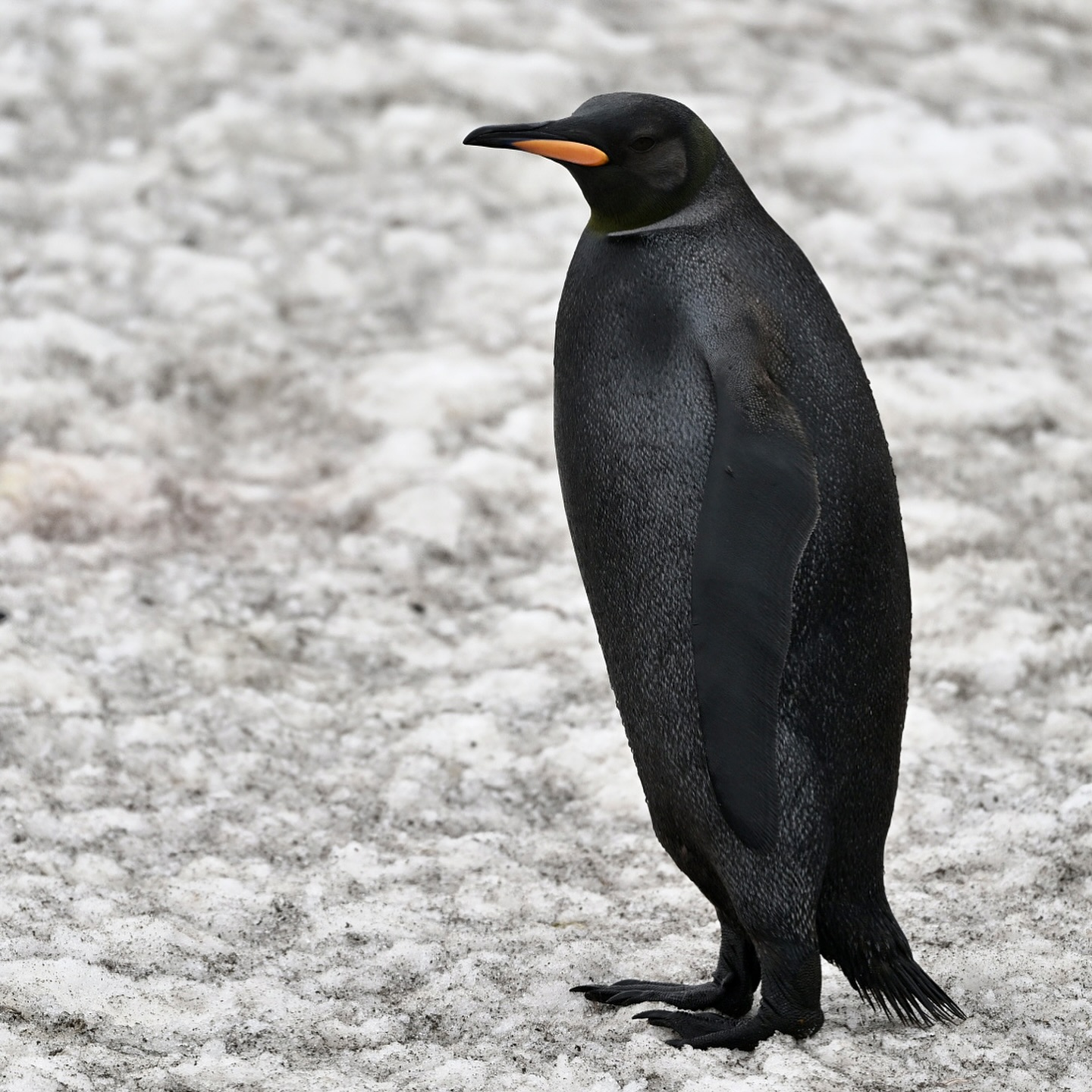The odds of photographing an extremely rare penguin once are astronomical. So, how do I even begin to explain it happening twice?
A few years ago, I spotted and photographed a yellow King penguin in South Georgia — a leucistic individual that ended up reaching people all over the world. It was a surreal experience that brought incredible conversations and connections, and it’s still one of the highlights of my career as a wildlife photographer.
Ever since, I’ve been guiding and photographing across Antarctica and South Georgia with the secret hope (okay, not so secret) that I’d see the yellow penguin again. So far, no repeat – but on a recent expedition, something equally remarkable happened.
We were a group of photographers on an excursion, scanning the colony like we always do, when one of us spotted something strange moving across the shore of St Andrews Bay. There we all were, silently watching a melanistic King penguin walk up from the surf and into the colony.
A fully black penguin.
It took me a second to believe what I was seeing. This penguin wasn’t muddy or wet – it was black. Its chest, normally white, looked like it had been dipped in ink. The bright yellow patches on the neck shimmered a kind of metallic green. Even in the chaos of a colony, it stood out immediately.
Melanism is the result of an excess of melanin, the pigment responsible for darker colouring. It’s the opposite of albinism – and even rarer. Some sources estimate that only 1 in 250 million penguins are fully melanistic. A few ornithologists have said the odds are incalculable. In any case, seeing one in the wild feels like winning the genetic lottery.
What struck me most was how confident and calm the bird seemed. Just like the yellow penguin, this one didn’t seem bothered by the attention. It walked right into the colony like it had done it a hundred times before. I was lucky enough to photograph it up close before it disappeared into the sea of normal coloured birds.
So now I’m left wondering…
First, a yellow penguin.
Now, a black penguin.
What colour should I aim for next?
I’m incredibly grateful to have witnessed both of these beautiful anomalies. Nature never ceases to surprise, and penguins still have a few tricks up their wings.
Interested in joining me on a future Antarctic adventure? Drop me a line and we’ll talk about your photography dreams.
Love from the ice!
